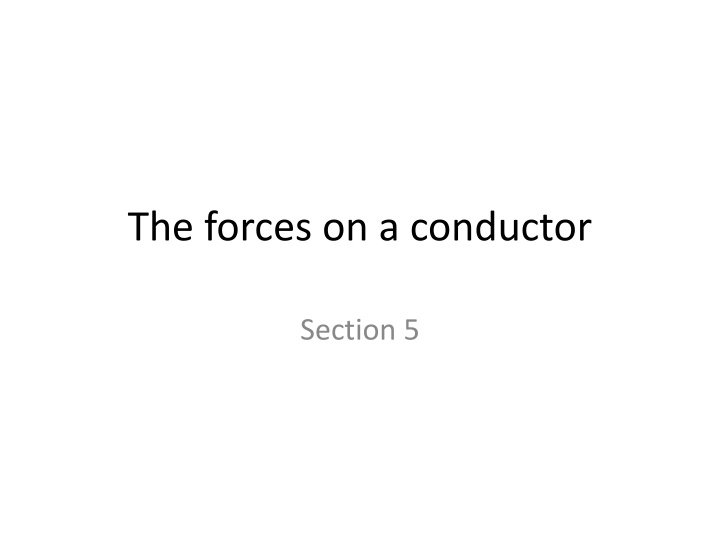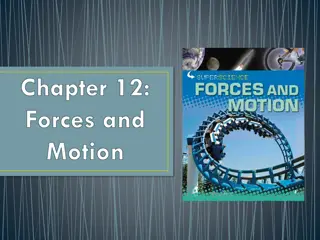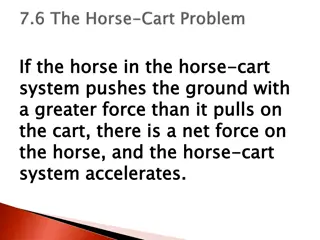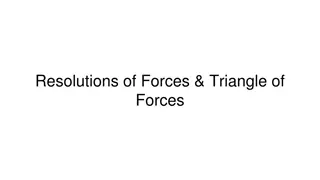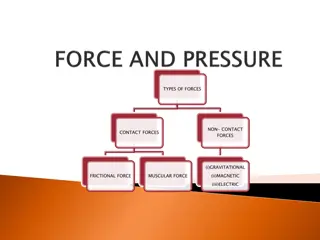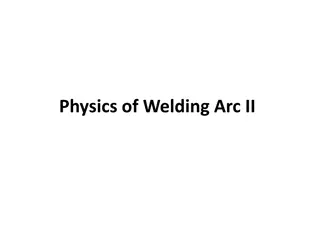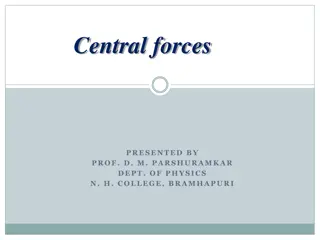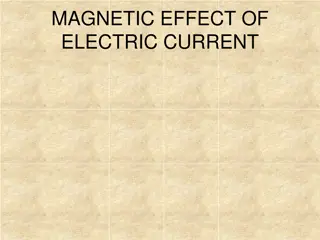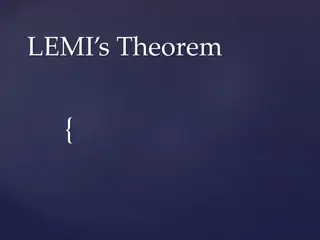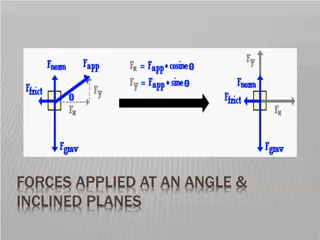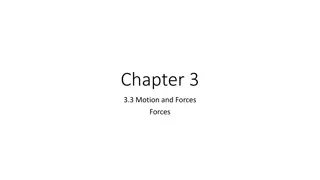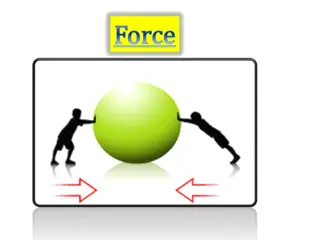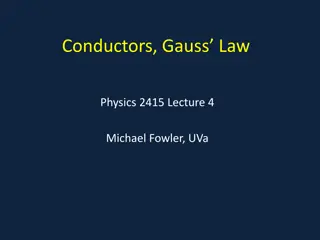The forces on a conductor
The forces and energy interactions on a conductor in electric fields are explored, including momentum flux density, Maxwell stress tensor, and force per unit area. The direction of forces and energy density are discussed in relation to surface charge density and charges constant. Understanding the behavior of conductors in varying fields is crucial in physics.
Download Presentation

Please find below an Image/Link to download the presentation.
The content on the website is provided AS IS for your information and personal use only. It may not be sold, licensed, or shared on other websites without obtaining consent from the author.If you encounter any issues during the download, it is possible that the publisher has removed the file from their server.
You are allowed to download the files provided on this website for personal or commercial use, subject to the condition that they are used lawfully. All files are the property of their respective owners.
The content on the website is provided AS IS for your information and personal use only. It may not be sold, licensed, or shared on other websites without obtaining consent from the author.
E N D
Presentation Transcript
The forces on a conductor Section 5
1. The force per unit area on a conductor in an electric field is always a negative pressure directed along the outward normal with magnitude equal to the field energy density A conductor in an electric field experiences forces
1. Momentum flux density in an electric field in vacuum is given by the Maxwell stress tensor n The amount of pi passing through dfk per unit time per unit area
Force on element df on conductor surface = flux of momentum through it from outside sum n (Fs)i = ith component of force per unit area on conductor = iknk E is normal to the conductor surface Let ez = n at a certain point on the surface Then E1 = E2 = 0.
(Fs)i = iknk = i3n3 = 33n3 Energy density The direction of F is outward: A negative pressure In terms of surface charge density = En/4 Fs = 2 2n = (1/2) E
Direction of F is outward: Negative pressure Charged conductor Uncharged conductor in an external field
3. Total (net) force on a conductor is the integral of Fs over the surface (This would be responsible for the acceleration of the body as a whole.) But Fsvaries in a complex way. Integral can be arbitrarily difficult. Easier to use energy methods The energy of a conductor in its field and in field of other charged conductors is U. The force on a conductor = The component of force in the direction q is
Conductors floating in vacuum of outer space have constant charge, but their potentials vary as the conductors move around. In this situation, we write energy U as a function of charges e and positions q (not both e and since they are not independent.) U (e, q) Then to calculate the forces on conductors from the function U (e, q), we take the gradient while mathematically holding charges constant. e General coordinate q could be an angle, not a displacement. Projection of torque on an axis rotation angle about that axis.
4. In the lab, keeping charge constant on a conductor is almost impossible. Conductors in a lab are usually maintained at constant potential, by means of large external charge reservoirs, e.g. capacitor, battery, or power supply Then charges on conductors change as the conductors move around. We then write energy of conductors as a function of potentials and positions. U ( , q) Forces are calculated by taking gradients while mathematically holding fixed, but there is an additional complication: U ( , q) is the energy of all the conductors, but it is not now the energy of the entire universe!
In constant potential situations, when a conductor moves, the energies of all conductors change AND the energies of all the charge reservoirs ALSO change. Motion dq Charge transfer maintains = a on the conductor The energy of the reservoir is reduced by ea a
The total energy of the universe when potentials are held constant is now. A Legendre Transform This is the energy of the conductors alone This is what changes due to the motions dq This is the energy lost by the reservoirs in putting ea on each conductor. Opposite sign for the case of constant ea
5. Derive the result mathematically: Write the energy again as a function of ea, which is convenient in cases of constant charge. Can change if charges change, or if conductors move. Energy of conductors= Work done by the field on a system of conductors, reduces the potential energy of the system in the field. Potential energy per unit charge, a function of ea. So that and new Same as (2.7)
In cases of constant potential, express energy in terms of the potentials Energy of universe: conductors AND of charge reservoirs the are attached to: So that and
6. The net force on an uncharged conductor = 0 in a perfectly uniform field. Uniform external field (in absence of the conductor) Spatial derivatives are zero! This field! Not this field! Equation (2.14) can still be useful if the field varies only slightly over the conductor. Then
7. The total torque is non-zero even in a perfectly uniform external field. Angle of rotation A rotation of the body in the field is equivalent to a rotation of the field relative to the body by the opposite angle Dipole moment of body. Where does that come from?
Torque Same as vacuum expression External field that would be present without the conductor Dipole moment of body induced by
8. Electrostriction If force and torque are zero, then the deformation of a conductor is the most important effect. Electric force on surface is a negative pressure Body expands
9. First approximation gives the change in volume, ignoring change in shape. Uniform outward pressure p Force per unit area = fractional change in volume Coefficient of expansion (bulk modulus)-1 From 1st law of Thermodynamics for hydrostatic system
11. Expansion of an uncharged conductor in a uniform external field
